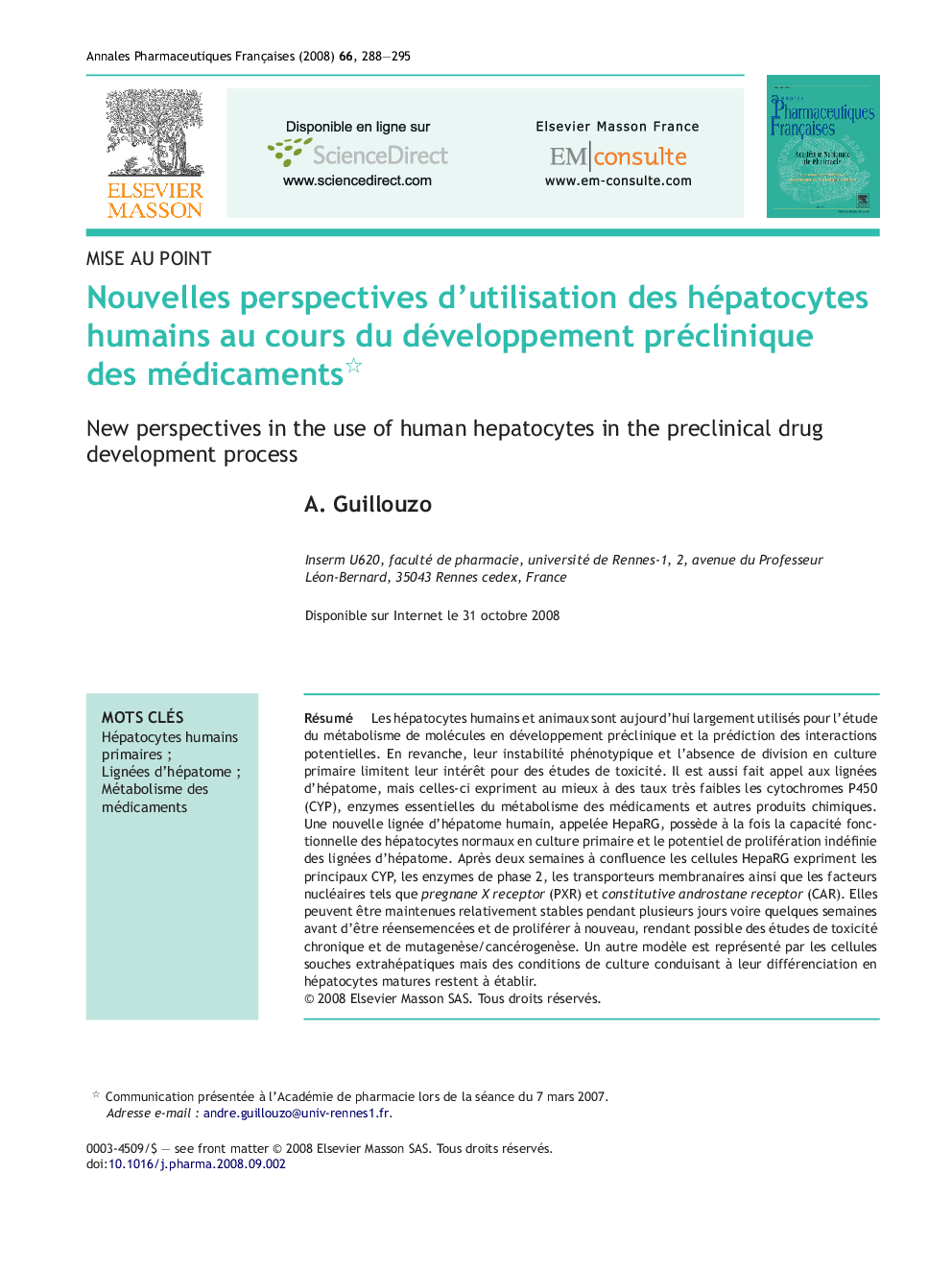| Article ID | Journal | Published Year | Pages | File Type |
|---|---|---|---|---|
| 2478332 | Annales Pharmaceutiques Françaises | 2008 | 8 Pages |
Abstract
Human and animal hepatocytes are now widely used for drug metabolism and interaction studies in the drug development process. However, their phenotypic instability and the absence of cell division in primary culture limit their interest for toxicity studies. Hepatoma cell lines are also used but they express very low levels, if any, of cytochromes P450 (CYP) that are essential for metabolism of a number of drugs and other chemicals. A new human hepatoma cell line, named HepaRG, possesses both the metabolic capacity of human hepatocytes in primary culture and the indefinite proliferation potential of hepatoma cell lines. After two weeks of confluence HepaRG cells express the main CYP, phase 2 enzymes, plasma membrane transporters as well as the nuclear receptors such as pregnane X receptor (PXR) and constitutive androstane receptor (CAR). They can be maintained functionally relatively stable for several days or even a few weeks before being seeded and proliferating again, making them suitable for chronic toxicity and mutagenesis/carcinogenesis studies. Another in vitro model system is represented by extrahepatic stem cells but experimental culture conditions allowing their differentiation into mature hepatocytes have not been defined yet.
Related Topics
Health Sciences
Pharmacology, Toxicology and Pharmaceutical Science
Drug Discovery
Authors
A. Guillouzo,
